SHARESYNC BEATS DROPBOX:
Learn why ShareSync is a better solution for your business than Dropbox.
ShareSync offers greater security, control, and integration.
When it comes to sharing photos and storing family recipes, Dropbox is wonderful. That’s why it’s so popular with consumers. But because people are so used to using it at home, millions of users have brought Dropbox into their work environment. According to Osterman Research, Dropbox has found its way into 70% of companies. And why? Because it’s free!
And this is a problem. Because, when it comes to business, Dropbox’s consumer roots show through. It’s not right for business. In fact, Dropbox ended up on Bloomberg BusinessWeek’s list of top banned apps because there are many file management use-cases for which Dropbox will actually leave you vulnerable. Simply put, it’s not secure!
Here are 6 reasons why Dropbox isn’t secure enough for business.
1. Dropbox has limited integration
With Dropbox, you get limited product integration across the tools you use every day. Dropbox doesn’t play well with Office, Exchange and Outlook. There is no easy Active Directory integration and you can’t use Exchange Distribution Lists to quickly share content with groups.
Syncing, sharing and content protection features
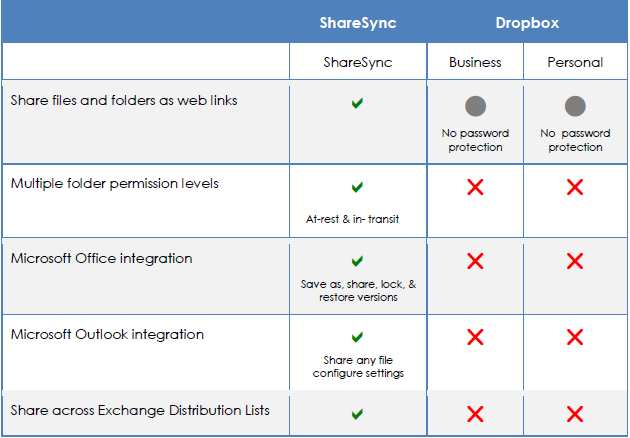
2. Users can’t set granular permissions.
Business users collaborate on files differently than individuals. Business collaboration requires granular control over permissions to ensure appropriate access levels for dozens of collaborators and stakeholders. This protects against accidental overwrites or deletions, but it also preserves security and secrecy. In this regard, Dropbox falls short: it doesn’t let you customize read and write privileges for individual users.
3. Data encryption is limited.
If you’re storing financial reports, strategy documents or competitive analyses, you want them protected. But Dropbox has limited encryption and security features that can leave customers’ data exposed. Your data is sitting on the same public cloud next to content from millions of other users, without adequate isolation.
Security and control features
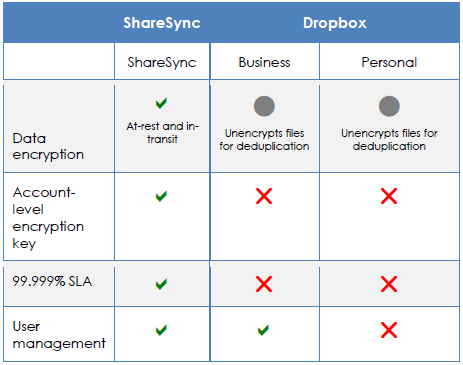
4. You can’t set different sharing permissions for sub-folders.
Sometimes a subfolder will contain data that shouldn’t be shared with everyone who can access the enclosing folder. But Dropbox doesn’t let you specify permissions for sub-folders. To protect your data, you’re forced to redo your entire folder structure. A business tool should adapt to your business processes, not force you to change them.
Syncing, sharing and content protection features
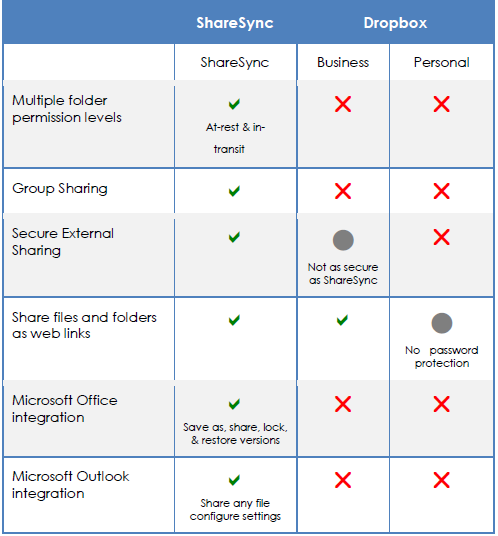
5. You can’t share password-protected web links.
Dropbox is great for sharing photos and videos between friends, but what if you want to share files over the web with a secure password? Or what if you want to add a password to a file you’ve already shared? When you send a business file with Dropbox, you lose control over who can access the file.
Content protection features
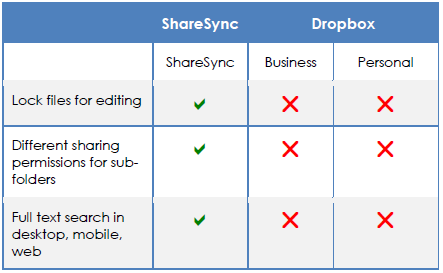
6. You can’t lock files for collaborative editing.
There’s nothing worse than losing productivity while you try to sort out version conflicts. If you’re working on a file that’s shared with multiple people, you want to be able to lock it so nobody else can overwrite it. Dropbox doesn’t support locking files for editing—and this lack of protection risks the resiliency of your data. This means there are no historical, unchanged versions to go back to.
Integration features
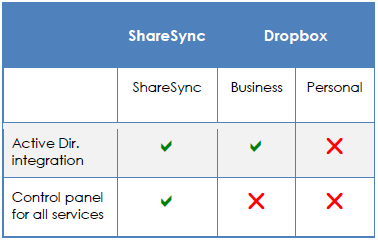
Employees love Dropbox so much because it’s so simple to use. Which means an out-and-out ban on Dropbox probably won’t be effective in your organization. In fact, IT is often unaware when employees start using Dropbox, so a ban may just drive users underground and increase the risks that much more.
To get the behavior you want out of your users, you need to provide file sync and share tools that enable the exact same functionality—but without the business risk. When it comes to getting employees to drop their Dropbox, the user experience is key.




